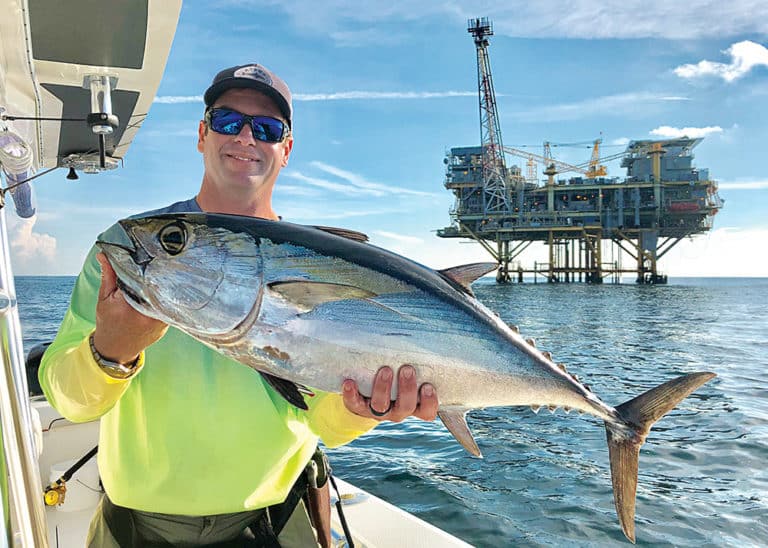Did you know Leonardo da Vinci invented SONAR? How about the sad fact that the first patent for active sonar was registered a month after the Titanic disaster? Try to imagine an early transducer that weighed 2000 pounds.
Over the last 500 years, sonar technology has come a long way. Today’s fish finders are compact, powerful and easy to use. To get the most out of your fish finder, it is important to understand how the technology works.
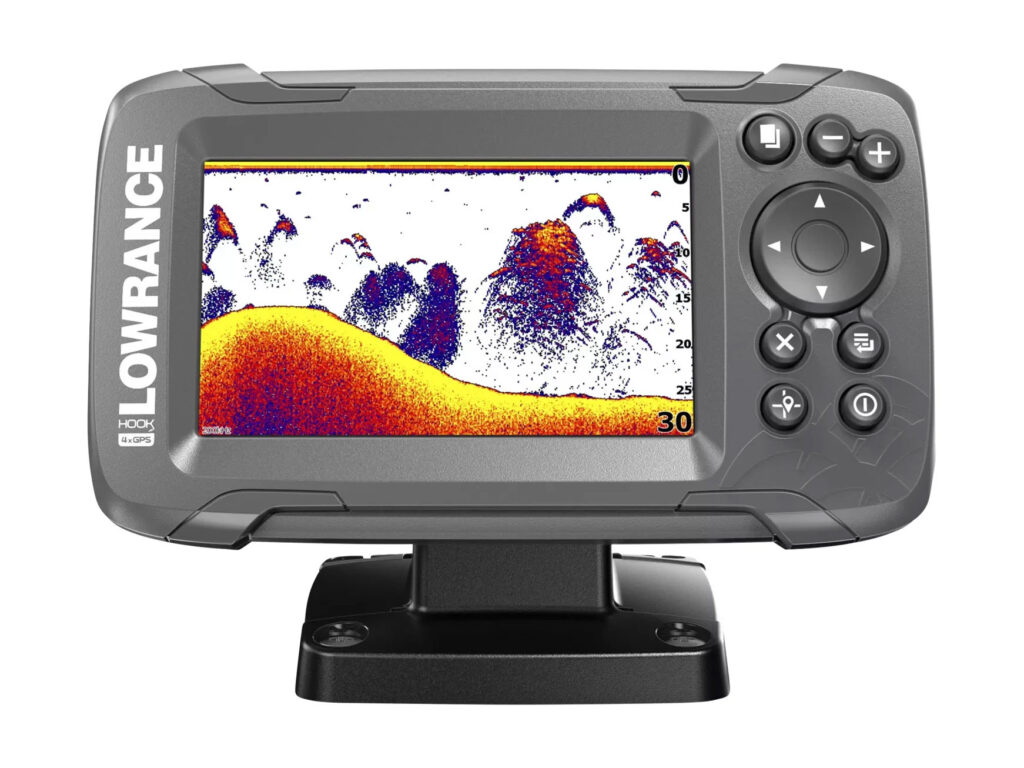
Sonar Technology: The Backbone of Fish Finders
Stand at the edge of the Grand Canyon and shout “Yodelayheehoo!” Then listen carefully and you’ll hear your words echoed back “Yodelayheehoo!” This is the basic concept behind active sonar.
Sonar stands for SOund NAvigation and Ranging. Bats, dolphins and shrews have been using the technology for millenia. It works like this: the SONAR transducer sends out a sound wave called a ping. The signal hits an object and bounces back to the transducer. A receiver in the transducer picks up the echo and calculates the object’s distance and direction.
The transducer signal travels in a cone shape. In shallow water, the base of the cone is narrow, providing greater detail. In deeper water, the base of the cone is wider, which reduces detail but increases coverage. In recent years, transducer signals have become more powerful and sensitive. Modern sonars send signals at multiple frequencies to combine the range of a low-powered signal and the detail of a high-powered signal.
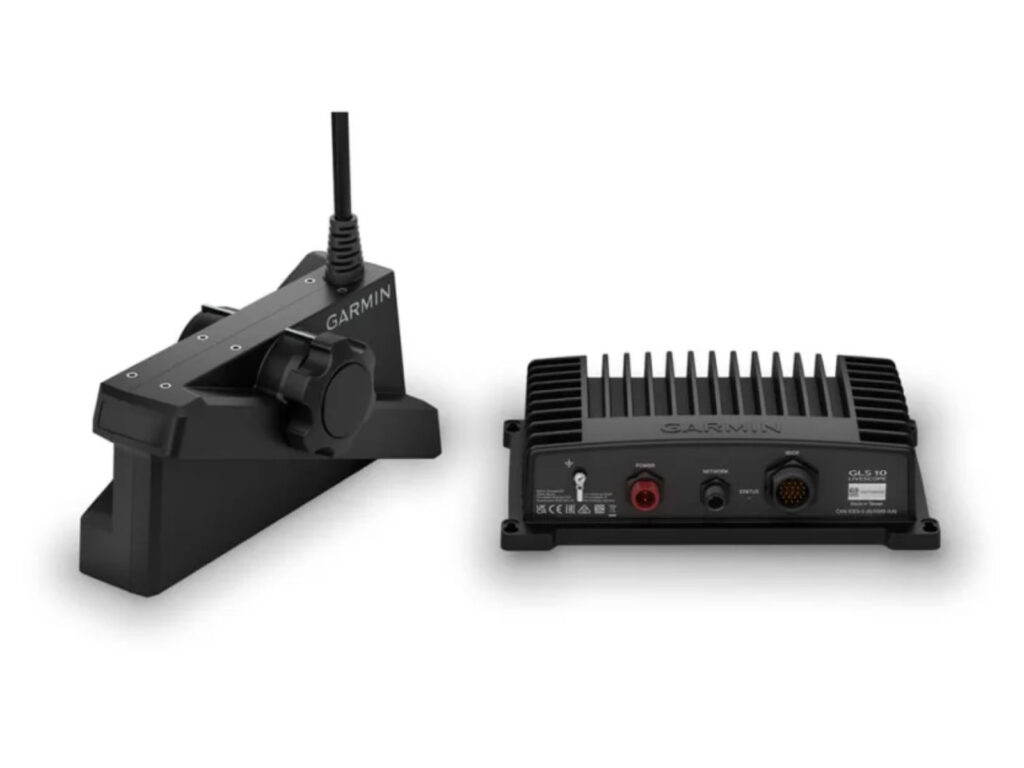
The latest advancement in sonar lets boaters see objects on both sides of the boat and in front of the boat. As the technology has become more complicated, the user experience has actually become easier. Still, understanding how sonar works and what technology is available allows me to get the best performance out of my fish finder.
Fish Finder Display
While sonar technology has basically stayed the same for 100 years, the sonar display has changed. To indicate depth and fish below the boat, early fish finders used an analog flasher spinning around a metal dial.
Building on the analog technology, the next generation of sonars displayed returns on a paper scroll. The user loaded the display unit with a roll of paper and a printhead printed out returns of the structure and fish. This is the ancestor of modern LCD displays that use transistors and charged diodes to show returns on a glass screen. The latest fish finder improves the user interface with an easy-to-use touchscreen display.
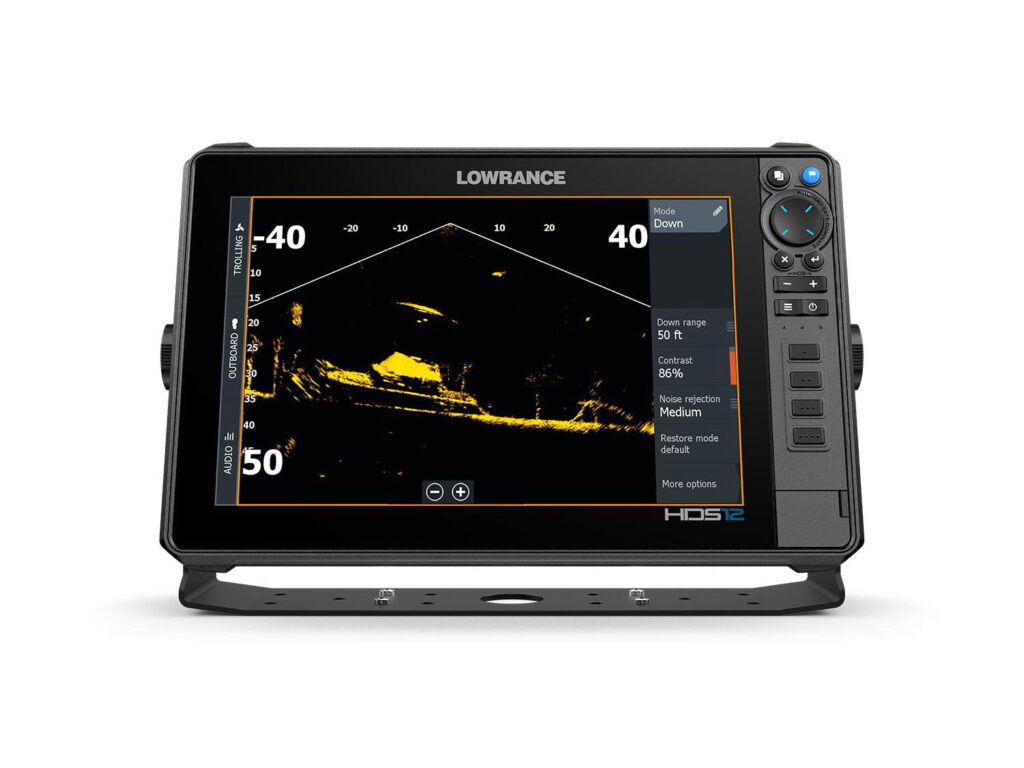
With a modern fish finder display, users can see incredible detail of fish and structure below and to the sides of the boat. The LCD display allows anglers to rewind the readout and zoom in on a target. When the sonar is coupled with a GPS, anglers can mark a target on the sonar and the GPS saves a waypoint to the chart. The most advanced fish finders work in conjunction with the GPS to create real-time bathymetric charts. These features are available in smaller and more affordable models, you can even get a portable fish finder with the most advanced technology.
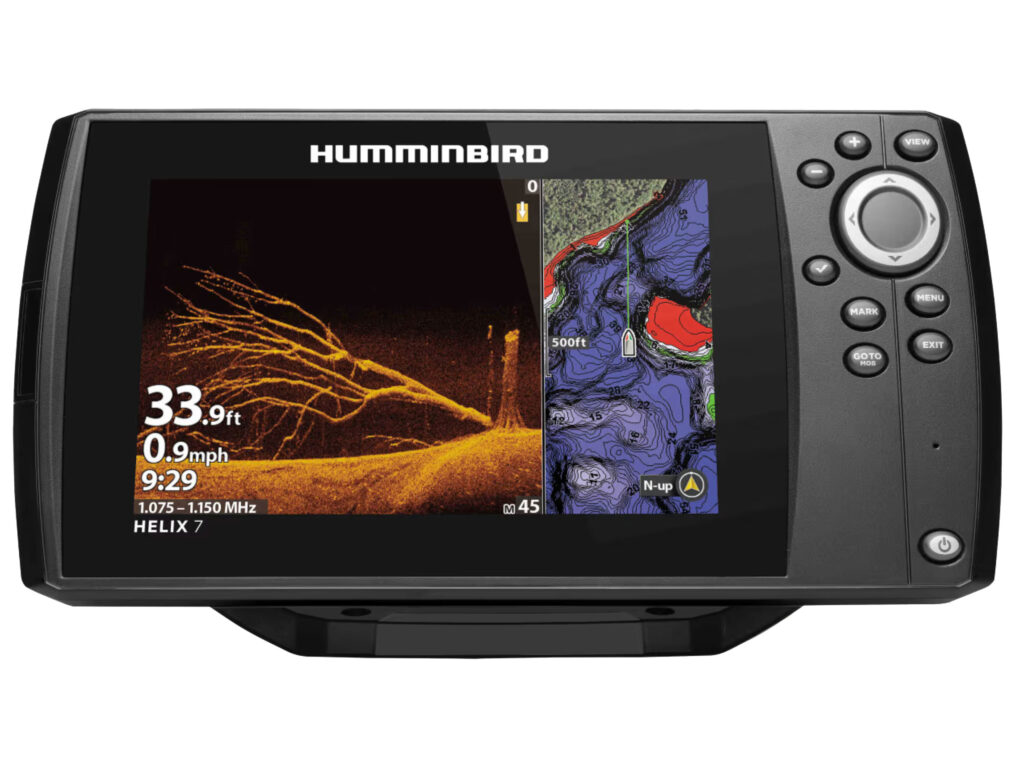
And fish finder manufacturers aren’t finished advancing the technology. The next generation transducers can see fish and structure in real time on all sides of the boat with larger, clearer and brighter displays. To choose the best display for your boat, read “How Big a Fishfinder Do I Really Need?”
Advanced Features and Technologies
Today’s transducers are more powerful than ever, enabling them to produce detailed, easier-to- use imagery for fishermen seeking an edge. And anglers can learn how to use a fish finder in no time. Here are a few of the most advanced technologies available.
Down and Side Imaging
The biggest advancement in fish finder tech is the introduction of down and side imaging sonar. Down imaging sonar sends multiple signals from the transducer to create a life-like image of structure and fish below the boat. Side imaging sonar sends the signal to the sides of the boat to capture fish and structure swimming up to 200 feet away. Using this technology, anglers get a more realistic underwater view making it easier to identify fish and structure.
Fish ID
Fish ID, which comes standard with all Humminbird HELIX electronics, is a popular feature for beginner anglers learning what fish look like on a fish finder. The fish finder display interprets the returns to identify targets that are most likely fish. Then, the display labels the marks as fish. Larger fish are shown with a larger fish icon.
This feature is great for anglers learning how to read a fish finder. Experienced anglers prefer to view raw returns to better identify the size and species of fish.
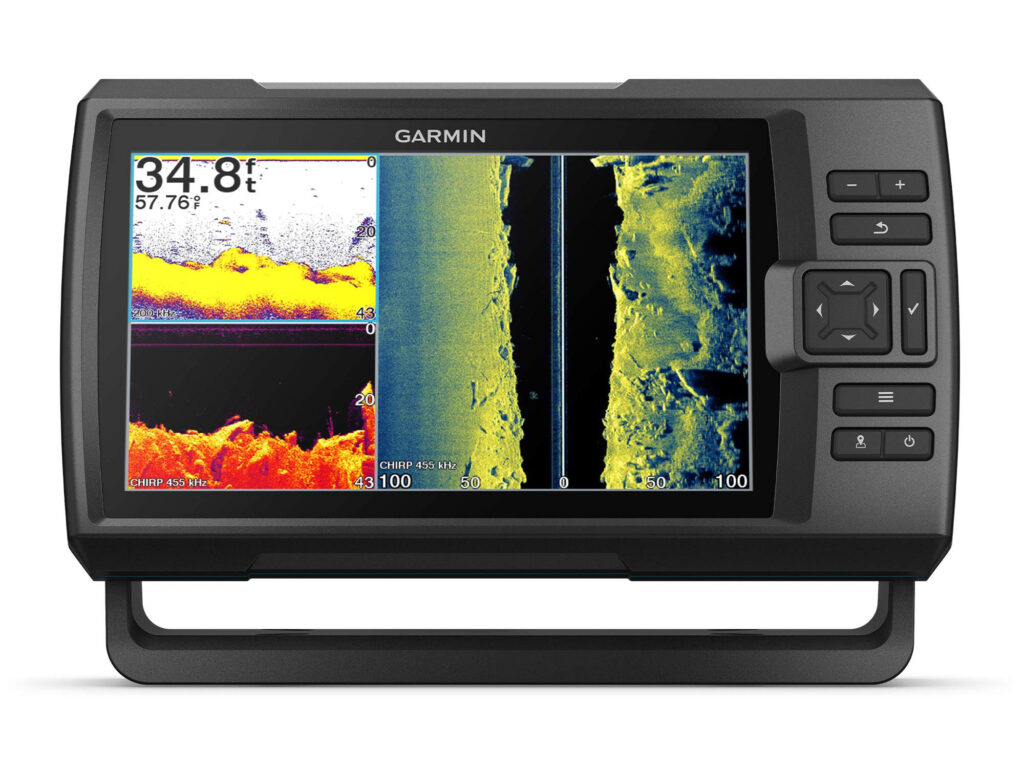
CHIRP
A traditional sonar uses a single signal to identify objects below the boat. Adjusting the power of the signal changes the return detail. A high frequency provides more detail while low frequency travels further through the water. You can read a more detailed description of fish finder frequency in this article.
To improve detail and deep-water performance, CHIRP sonar transmits a longer signal ascending through a range of frequencies. This allows the signal to capture detail and still reach hundreds of feet below the boat.
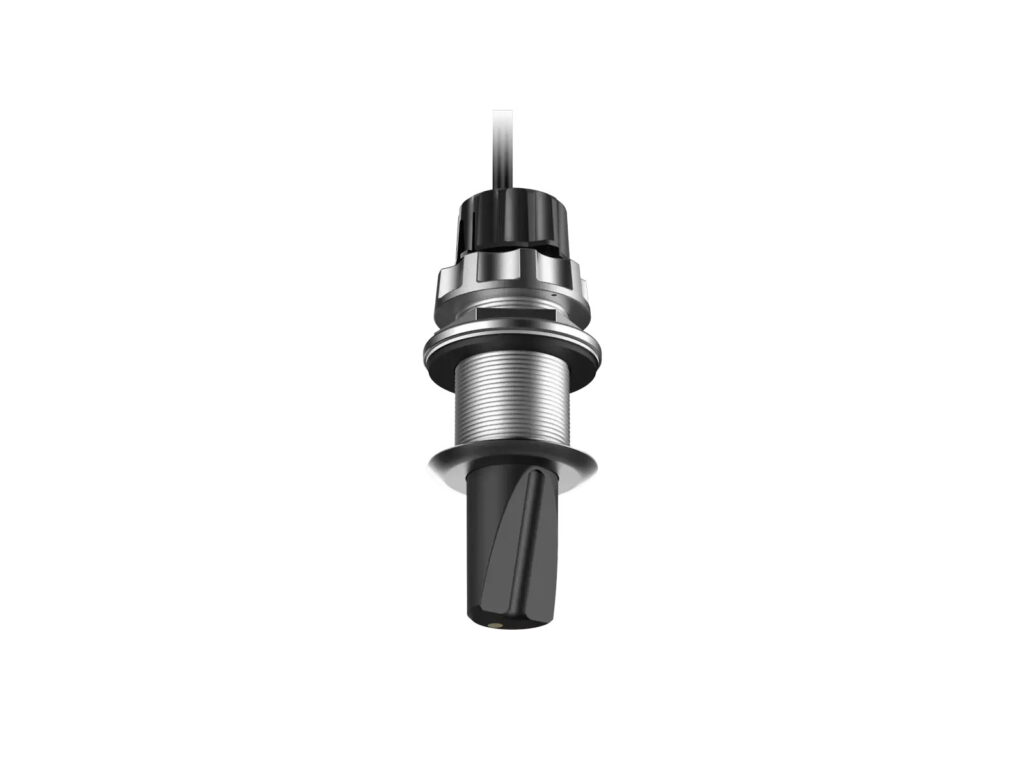
Forward Facing Sonar and 360 Sonar
Forward facing and 360 sonar have changed the way anglers target fish. The advanced transducers allow a live view of fish and structure in any direction from the boat. A 360 sonar transducer displays fish and structure in a 360 degree arch around the boat. Forward facing sonar allows the angler to turn the transducer to shoot the signal at potential targets. With forward facing sonar, the angler can see fish swimming and even watch his lure working in real time.
Get the Most Out of Your Fish Finder
There has never been a better time to be a fisherman and a worst time to be a fish. New fish finder technology provides anglers a detailed view of fish below, in front and to the sides of the boat. Using a powerful fish finder with an accurate GPS navigation system allows anglers to dial in the location of fish, bait and structure.
Most important, these features are available at a reasonable price in a variety of display sizes. With the price of this new technology getting lower, anyone can find the best fish finder for the money.
FAQ
Does a fish finder have to be in water to work?
In order to work properly, the fish finder transducer must be submerged in water. Read the fish finder instructions to correctly install the transducer for the best signal transmission.
What do fish look like on a fish finder?
With some practice, anglers can identify fish and bait on their fish finder. It’s even possible to determine the species and size. With traditional sonar, fish look like an arch suspended on the display background. A school of baitfish appears as a blob on the display. Fish hanging on the bottom show up as light-colored bumps above the darker color of the dense bottom structure. On side scan sonar, the fish display as a blob above a dark sonar shadow. On forward facing sonar, a fish looks like a fish, you can even see it swimming and striking the lure.
How fast can you go with a fish finder?
A fish finder will show depth at cruising speed but you won’t see much detail of structure and fish. For the best results, use the fish finder when the boat is going slower than 10 miles per hour. For trolling, drifting or sitting at anchor, adjust the scroll speed in the fish finder settings to control how fast the images move across the screen.





